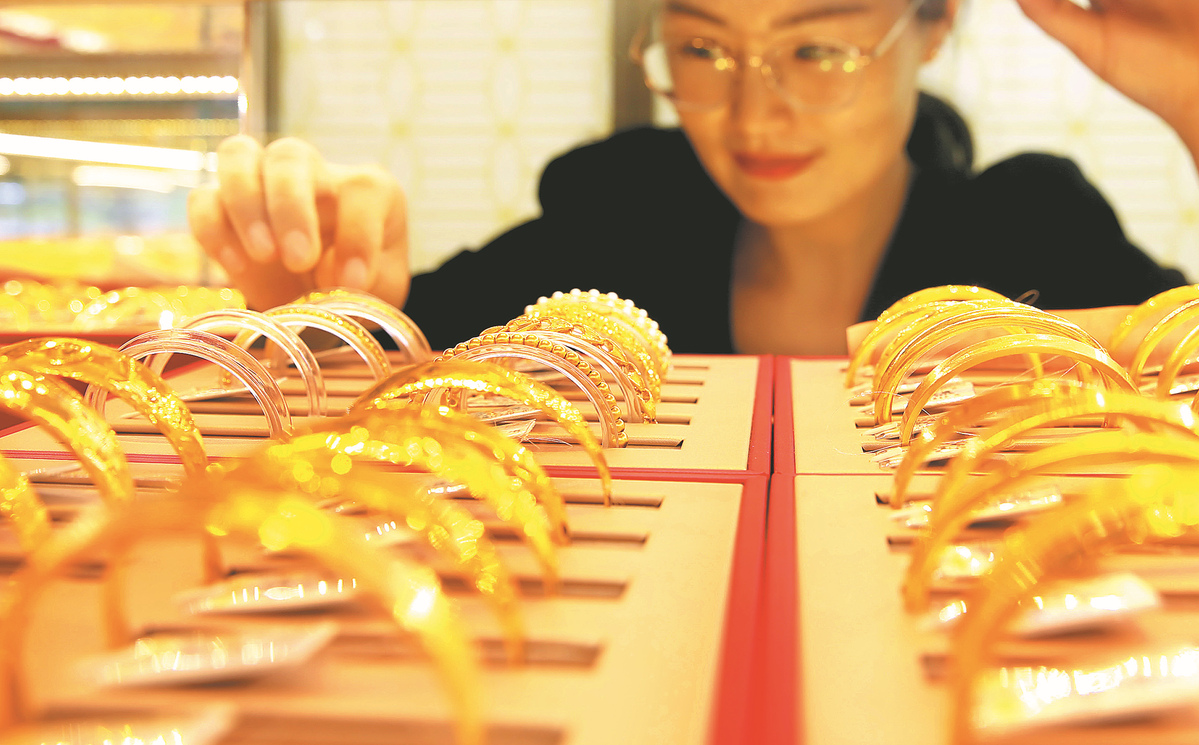Design-heavy jewelry shines in H1


Rising gold prices dampened gold jewelry consumption in China during the first half of this year, although lightweight, well-designed jewelry with high added value remained popular, the China Gold Association said.
According to the association, China's gold consumption fell 3.54 percent to 505.21 metric tons in the first half, as high prices deterred jewelry purchases.
The decline in overall consumption came despite a significant surge in demand for gold as a safe-haven asset amid heightened geopolitical tensions and economic uncertainty.
Escalating geopolitical tensions and mounting economic uncertainty have amplified the yellow metal's role as a safe-haven store of value, triggering a surge in private demand for bullion bars and coins, it said.
According to CGA data, gold jewelry consumption dropped 26 percent year-on-year to 199.83 tons in the January-June period, while demand for gold bars and coins, often seen as an investment, surged 23.69 percent to 264.24 tons, due to the precious metal's enhanced role as a hedge against inflation and economic volatility.
Industrial gold consumption also increased by 2.59 percent to 41.137 tons, driven by a recovery in demand for gold salt, it said.
The World Gold Council attributed the cautious stance from retailers on restocking to seasonal weakness, still-tepid consumer confidence and elevated gold prices.
Looking ahead, the council said low consumer confidence and industry consolidation may continue to weigh on gold jewelry demand, while its investment potential could remain healthy.
The council believes geopolitical risks and a weak dollar were notable contributors to increased gold prices, while continued central bank purchases further aided gold.
Industry experts believe that demand for gold as an investment avenue is climbing, as investor anxieties about geopolitical situations and tariff wars intensify, leading to a gold market rush to balance asset portfolios and hedge against risks.
This demand cannot be suppressed, even with gold prices at historical highs, said Zhao Xiangbin, chief strategist at Beijing Gold and Forex Fortune Investment Management.
On the supply side, China's domestic gold production edged down 0.31 percent year-on-year to 179.08 tons in the first half of 2025, as major Chinese gold mining enterprises adjusted their short-term production plans to focus on long-term, high-quality development, increasing investment in infrastructure and technological upgrades for large-scale mining projects.
However, the overseas operations of Chinese gold mining companies saw significant growth, with output rising 16.17 percent to 39.61 tons in the first six months of the year, reflecting their global development strategy.
Market activity on the Shanghai Gold Exchange also remained robust.
According to Zhao, the SGE made progress in its international expansion, further enhancing China's influence on the global gold trading and delivery supply chain, and significantly boosting the country's bid for gold pricing power.
"For long, China has been the world's largest gold producer and consumer, with the central bank continuously increasing its gold reserves, and domestic gold mining enterprises actively involved in global exploration and mining resource development," said Zhao.
"From mining to delivery, trading, and even gold financial derivatives, China's gold market has established a comprehensive, multidimensional system, especially given the current volatile international environment."
Chinese gold exchange-traded funds saw substantial inflows during the first six months, adding 84.77 tons, a 173.73 percent increase compared to the 30.70 tons added in the same period of 2024. By the end of June, domestic gold ETF holdings reached 199.51 tons.
Meanwhile, China's central bank continued to bolster its gold reserves, adding 18.97 tons in the first half of 2025. As of the end of June, China's total gold reserves stood at 2,298.55 tons, it said.
zhengxin@chinadaily.com.cn




































